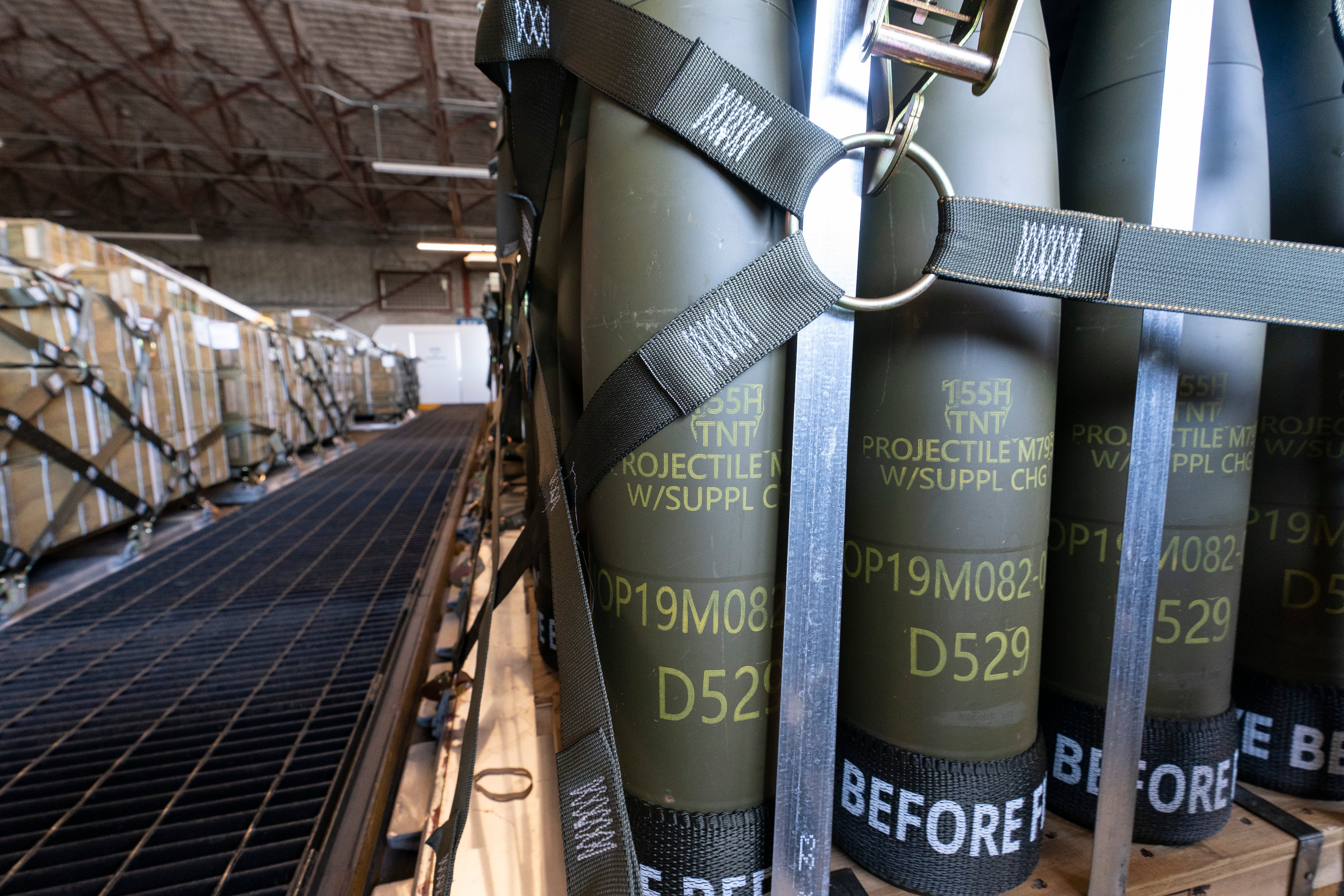The U.S. Army has started diversifying its supplier base for 155mm artillery shells, moving away from the bottleneck of a single source that has endangered the flow of fresh ammo, according to a top service official.
The service is racing toward a goal of shoring up all major single sources that provide parts or materials for 155mm munitions by the end of 2025.
“There’s going to be a lot of ribbon cuttings between now and the end of the year,” Doug Bush, the Army’s acquisition chief, told Defense News in an interview ahead of the Association of the U.S. Army’s annual conference.
The Pentagon is investing billions of dollars to increase the capacity of 155mm munition production as it races to replenish stock sent to support Ukraine’s fight against the Russian invasion, which began in early 2022, and to ensure the U.S. has what it might need should conflict erupt across multiple theaters at once. The Army planned to spend $3.1 billion in FY24 supplemental funding alone to ramp up production.
Prior to the war in Ukraine, the U.S. could build about 14,400 of the artillery shells per month. But as Ukrainian forces burn through the ammunition for howitzers sent to the country, the U.S. recognized quickly that replenishment could not be done with the current infrastructure.
The service has set a target of producing 100,000 artillery shells per month, but Army officials have shared it has fallen slightly behind schedule. Even so, the Army is now producing 40,000 shells a month, Army Secretary Christine Wormuth said at the Defense News Conference last month, adding that the plan is to reach 55,000 shells a month by the end of the year.
RELATED

“Part of what’s enabling that are things like the brand-new plant that we opened up in Mesquite, Texas, a couple of months ago. We’ve got a new load, assembly, pack plant in Camden, Arkansas, that’s going to be opening up pretty soon. So those are examples of where you see the payoff in that investment in the organic industrial base,” she said.
The Army had been making 155mm shells at a single plant in Scranton, Pennsylvania, and a privately operated facility nearby. All of the shells were transported to one place – Iowa Army Ammunition Plant – where they are packed with explosives.
The service quickly went under contract with General Dynamics Ordnance and Tactical Systems to build a new, mostly automated facility in Mesquite to build more shells using production systems from Turkey. And it also contracted more shell production with a company in Ontario, Canada – IMT Defense.
Shell production will go from basically one facility to four by early next year, Bush said.
The load, assemble and pack process will, by early next year, be conducted at two other facilities outside of Iowa — General Dynamics in Camden, Arkansas, and Day & Zimmerman in Parsons, Kansas, Bush said.
The Army awarded $1.5 billion in contracts to companies globally to procure bulk energetics like TNT and IMX-104 explosive as well primers and fuses in 2023.
Even so, the Army is also setting up two locations to produce propellant. “This is the propellant that goes inside the modular artillery charges right now, it’s only done in one place. It’s Valleyfield in Canada,” Bush said. Another propellant production facility will be set up at Radford Army Ammunition Plant in Virginia and the facility in Canada will have a capacity increase, he added.
RELATED

The Army is planning to design and construct a domestic TNT production facility, which will likely be at Radford, Bush has said in the past. Once a contract is awarded, the plan is to build it in 48 months. Currently, the U.S. relies entirely on TNT from allies.
The only place that made combustible cartridge cases – Armtec Defense Technologies – was in Coachella, California, well-known for its music festival, but also for being located along the San Andreas Fault with a high risk of large earthquakes. Day & Zimmerman will produce the cases at another location in Texarkana, Texas.
The Army is also setting up two locations producing propellant charges – American Ordnance in Middletown, Iowa, and General Dynamics in Camden, Arkansas.
“There [is] still the occasional single point, if you go down far enough, I’m not sure we can ever eliminate them entirely,” Bush said. “But we can build in more redundancy than we had before, which was, frankly, a very fragile setup where I could give you grid coordinates for like, four buildings in America, and if one of those, something happened tomorrow, we weren’t making anything … it definitely isn’t acceptable now, and we’re trying to get away from it.”
Jen Judson is an award-winning journalist covering land warfare for Defense News. She has also worked for Politico and Inside Defense. She holds a Master of Science degree in journalism from Boston University and a Bachelor of Arts degree from Kenyon College.







